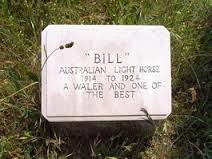

One common understanding that we all have about Gallipoli is that it was a tragedy of epic proportions. That men travelled from the ‘Ends of the Earth’ to meet in battle on the plains, ridges, gullies and beaches of this beautiful place. A place that has seen the clash of civilisations for longer than the last hundred years but for thousands instead. Herodotus and Homer wrote of these stories of ancients who crossed the Hellespont. The border between east and west. #GallipoliArt @GallipoliArt
In the early days right after the Armistice in 1918, the Allies set forth on burying their dead and the dead of the Ottoman forces they faced. This task is continuing today, a hundred years later. There are now 31 cemeteries maintained by the Commonwealth War Graves Commission and 50 grave sites, memorials and cemeteries for Turkish soldiers. Originally though, the entire battlefield was considered a sacred cemetery. Soldiers were buried where they fell. It wasn’t until years later that the decision was made to consolidate all these graves into the 31 Allied cemeteries we have now……
However there is a couple of exceptions to this rule………….


Charles Doughty-Wylie, was no stranger to war. He had fought in every major conflict involving the British forces since 1895. During the Young Turk Rebellion of 1909 he was the British Consul in Mersin. As a result of the rebellion he stepped in to halt the massacre of Armenians (around 30,000 deaths) along the southern coast of Turkey. He even procured troops from the local governor in Adana and with some Marines from a British warship almost single-handedly stopped the massacre. His wife set up a makeshift hospital for injured Armenians. In the Balkan Wars he assisted the Turks as part of the British Red Cross and received the Order of the Medjidie for his work. #GallipoliArt @GallipoliArt
In 1915 he helped British troops get ashore at V Beach from the SS River Clyde, the modern day ‘Trojan Horse’ landing troops at Seddul-Bahir Fort. Doughty-Wylie had such an affection for Turkey and Turks that although he would lead his troops into battle, he would not lift a weapon against them. On 26th of April during the clearing operation of Seddul-Bahir village he was killed instantly. For his efforts he was awarded a VC. His body lay where it fell and he was buried in that spot, alone, on the hill at Seddul-Bahir. to this day his resting place is preserved, away from the nearest CWGC cemeteries.
Doughty-Wylie was certainly what you would call an ‘International Man of Mystery’ he carried on a long distance love affair with the ‘Queen of the Desert’, Gertrude Bell it was sometime later during the campaign that a lone boat landed on the nearby beach and a solitary figure of a woman dressed entirely in black, silently came ashore, walked straight to his graveside, laid some flowers, spent some time alone there, then just as quietly returned to the boat and sailed away. Nobody knew who it was or how she could so confidently sail into a war zone and walk directly to his grave. To this day nobody is sure if it was the British female spymaster and unofficial Queen of Iraq, Gertrude Bell, or his wife who was working in a hospital on the Greek Islands.
Look out for the upcoming movie on Gertrude Bell’s life with Nicole Kidman as Gertrude and Damian Lewis as Doughty-Wylie!
He occupies the only solitary human grave associated with the Gallipoli Campaign. But he is not the only veteran of that conflict that lies in a solitary grave……
Bill the ‘Bastard’ was no less a hero at Gallipoli, only thing was…. he was a horse! Bill, known as ‘the Bastard’ was called so because nobody could ride this huge ‘Waler’ (https://en.wikipedia.org/wiki/Waler_horse) carried the mail for 7 kilometres riderless and injured. A vet found him and nursed him back to health. Bill went on to fight in Palestine, even saving his rider and four other Light Horse troopers, bringing them to safety. of the 130,000 sent from Australia there remained only 11,000 that were sold to the British, the rest were destroyed or shot by their owners, this poem gives us an idea of what it was like at the time….
-
- I don’t think I could stand the thought of my old fancy hack
- Just crawling round old Cairo with a ‘Gyppo on his back.
- Perhaps some English tourist out in Palestine may find
- My broken-hearted Waler with a wooden plough behind.
-
- No: I think I’d better shoot him and tell a little lie:–
- “He floundered in a wombat hole and then lay down to die.”
- May be I’ll get court-martialled; but I’m damned if I’m inclined
- To go back to Australia and leave my horse behind.
-
-
- From Australia in Palestine, 1919
-
Bill on the other hand was given one final task. To assist the men who returned to Gallipoli to bury their dead. After the task was complete, Bill was given to a local family charged with caring for the graves. Bill died peacefully in 1924 and has his own grave in the Anzac Gardener’s Cottages.
A true Australian hero no less……..
In closing, Gallipoli is not a clean and regimented battlefield. To this day the bones and remains of soldiers who lost their lives here still litter the old trenches and gullies. You have to remember that of the 8,700 Australians who lost their lives here, that nearly 4,000 have ‘No known grave’. It is still a testament to the savagery and tragedy of this place.
So Bill the ‘Waler’ a horse and Charles Doughty-Wylie both share the unique distinction, of the only solitary graves of Gallipoli.

#GallipoliArt @GallipoliArt
William John Carswell
gallroachie